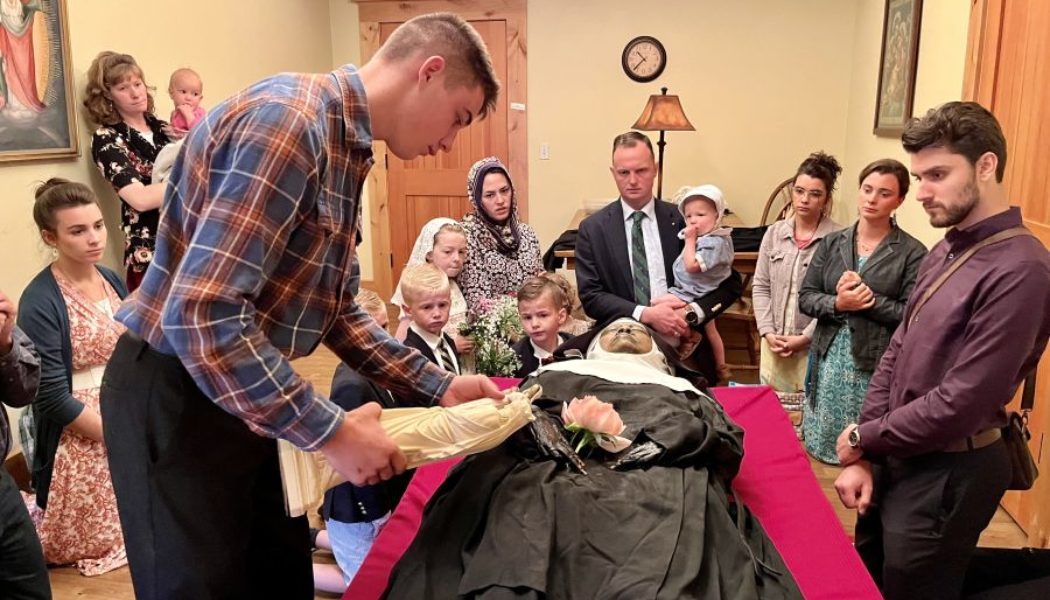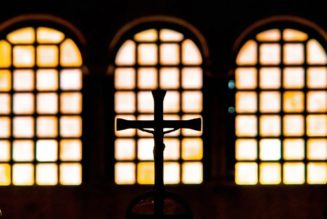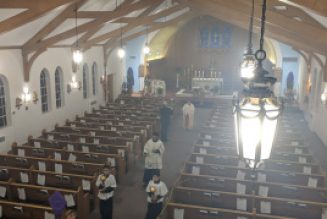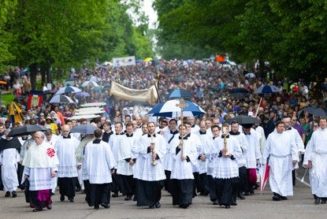“You are dust,” says Genesis 3:19, “and to dust you shall return.” Every Ash Wednesday, we hear this scriptural reminder of our mortality. While the soul is immortal, the body naturally decays after death.
Naturally — but not always.
On Aug. 28, the Diocese of Ávila in Spain reported, “Today the tomb of St. Teresa was opened and we have verified that it is in the same condition as when it was last opened in 1914.” St. Teresa of Ávila died more than four centuries ago on Oct. 4, 1582.
The week before, on Aug. 22, Bishop James Johnston in the Diocese of Kansas City-St. Joseph, Missouri, released a report on Sister Wilhelmina Lancaster — the foundress of the Benedictines of Mary, Queen of Apostles monastery in Gower, Missouri — who died in 2019 and was buried with no embalming or artificial preservation in an unsealed wooden casket. Four years later, medical examinations “discovered that her body did not exhibit signs of decomposition that would normally have occurred.” Neither did her clothing show features of breakdown.

What Is Incorruptibility?
“Throughout the history of the Church, there have been men and women who, after a significant amount of time after their death, have been found incorrupt,” Father John Paul Mary Zeller of the Franciscan Missionaries of the Eternal Word told the Register. “That is, their bodies have been untouched by natural decomposition. When that happens, it’s always taken seriously. As with the case of Sister Wilhelmina, the faithful are drawn to the extraordinary. The Church opens an investigation surrounding these cases. Four centuries after the death of St. Teresa of Ávila, we recently learned that her bodily remains are incorrupt.”
“In the case of the incorruptibles, it appears there is usually something about their life of faith that is noteworthy and worth highlighting,” Father John Paul explained.
This is surely true of St. Bernadette Soubirous, who died April 16, 1879. Thirty years later, on Sept. 22, 1909, her body was found incorrupt. Her skin had the color of a living person. Her hands, holding a rosary, were similar. Exhumed again 10 years later, she looked the same — and then the same again in 1925, when a very light wax covering was placed on her face and hands. She was placed in a glass reliquary at her order’s motherhouse in Nevers, France, and today remains looking peacefully asleep.
Another Marian visionary, St. Catherine Labouré, who received the Miraculous Medal from the Blessed Mother, is also incorrupt. Almost a century and a half after she died, on Dec. 31, 1876, her body has remained incorrupt, appearing as if natural. She also rests in a glass sarcophagus in the Chapel of Our Lady of the Miraculous Medal in Paris.

Also housed in that chapel is the heart of the founder of her Daughters of Charity order, St. Vincent de Paul, but his bones rest in the nearby St. Vincent de Paul Chapel in Paris. His body was found fully incorrupt when it was exhumed in 1712. Exhumed again for his canonization a quarter-century later, except for his heart and bones, his body had decomposed due to flooding.
“In the Church, we have over 100 documented cases of incredible examples of saints whose mortal bodies have not fully decayed — basically, have not corrupted,” Father Chris Alar of the Marians of the Immaculate Conception told viewers in one episode featuring the incorruptibles as part of his Living Divine Mercy series on EWTN. In her 1977 book, The Incorruptibles, author Joan Carroll Cruz further explores the details of these saints and blesseds.
Father Alar said that sometimes the whole body remains fully intact, while other times “only a limb or an organ of a saint’s body has not decayed, such as St. John Vianney’s heart.” In 2019, his heart was carried to churches around the United States for people to see and venerate.
Other saints that Father Alar cites among the incorruptibles include Sts. John of the Cross, Clare of Assisi, Rita, John Bosco and Maria Goretti, whose incorrupt body was displayed in several churches in the United States in 2015. They join many other incorruptibles to impart a vital truth, according to Father Alar: “They give us an incredible witness of how living a holy life on earth will bear fruit even after death.”

Sweet Smells and Oils
St. Cecilia, patron of musicians, is the earliest known incorruptible saint. She was martyred around A.D. 177. In 1599, she was exhumed and found incorrupt and in the same position in which she was martyred. “And,” wrote Cruz, “there was a mysterious and delightful flower-like odor proceeding from the coffin.”
Beautiful scents surround, or have surrounded, some incorruptibles. When Teresa of Ávila’s tomb was opened in 1914, the sisters noticed a lovely fragrance that was reported during her life and her previous exhumations and transfers of her body. When St. Albert the Great was exhumed two centuries after he died in 1280, witnesses detected a similar heavenly fragrance.

Sts. Cecilia, Teresa and Albert are not alone.
As Cruz stated, “St. John of the Cross was fragrant many years after his death.” And his body remained flexible, as well.
Other phenomena were associated with John of the Cross. Months after he died, when his finger was cut off, the wound started to bleed. Similarly, although St. Nicholas of Tolentine died in 1305, a brother covertly removed his arms 40 years later, but he was caught when the wounds started bleeding copiously. The wounds continued to bleed on various occasions for the next four centuries. Pope Benedict XIV considered this a miracle.
Some incorruptibles exude oil. One of the most remarkable is St. Charbel Makhlouf, a Maronite monk who died in 1898. Four months after St. Charbel died, his body’s pores began exuding “a liquid described as perspiration and blood, which had the distinct odor of blood,” said Cruz. At the time, small pieces of cloth were soaked in the fluid and given as relics that often relieved pain and brought about cures. Put in a second tomb in 1950, liquid started coming out from his remains. Then he was placed in another tomb in 1950, but on that Feb. 25, and continuing for the entire year, pilgrims to the shrine noticed liquid seeping from a corner of the tomb and flowing onto the floor. When the tomb was opened, St. Charbel’s body was completely incorrupt, lifelike and flexible. In this case, the phenomena reached back to his original burial, when his body was placed without a coffin into the ground. Four months later, after frequent rains, his “body was found floating in mud in a flooded grave” — still totally incorrupt.
And Blessed Karl of Austria was found incorruptible in 1972 — 50 years after his death.
Eternal Truth
In so many of these cases, scientists are unable to explain these phenomena. All the more reason why people are drawn to these saints. If that happens out of curiosity, the attitude quickly changes to reverence and awe which deepens the spiritual life of the people.
Father John Paul shared a personal story. “When I was in my 20s and experiencing a conversion in my faith, I was drawn from the incorruptibles and Eucharistic miracles. I found strength in the extraordinary and unexplainable. I believe the incorruptibles point to the importance of the body. The body is important. No matter if our bodies are preserved like the incorruptibles or our bodies naturally decompose like most, our bodies will be raised at the Second Coming, when our Lord Jesus comes in glory. The incorruptibles point us to that truth of the faith — we will be raised on the last day, and we can have confidence in that.”

The Catechism of the Catholic Church (997) reinforces this confidence and assures the faithful that one day, “God, in his almighty power, will definitively grant incorruptible life to our bodies by reuniting them with our souls, through the power of Jesus’ Resurrection.”
Father Alar also emphasized this assurance. “The incorruptibles demonstrate that the spiritual world and the physical world are intertwined,” he emphasized. “We don’t know all the precise details of this interaction, but we know that what we do with our bodies affects our souls, and what we do in the spiritual realm affects our bodies. The incorruptibles also provide a compelling sign that points to the resurrection of the dead, when all God’s saints will receive back their bodies, incorruptible and transformed by his glory on the Last Day.”









